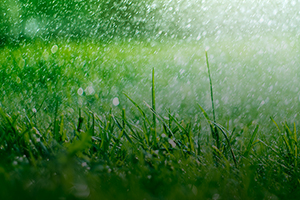Self-Watering Soil

A newly developed type of soil that harvests water from ambient air could make it possible to farm virtually anywhere and reduce water usage during droughts. It contains super-moisture-absorbing gels that pull water from the air at night, when it’s cooler and more humid. During the day, solar energy heats the soil, causing it to release the moisture. Each gram of gel can absorb 3 to 4 grams of water; between 0.1 and 1 kilogram of the experimental soil can support 1 square meter of farmland, depending on the crop being grown.
The researchers compared moisture retention in the new soil to a sandy soil mixture. After four weeks, the water-harvesting soil had retained about 40 percent of its water while the sandy soil retained only 20 percent.
They then planted radishes in each type to evaluate growth. The hydrogel soil was watered once initially to encourage germination, but the sandy soil was irrigated multiple times during the first four days to give the plants the opportunity to get established. After two weeks, the hydrogel radishes had survived without further watering, but none of the sandy soil radishes had survived.
Breakthroughs such as this will enable agriculture in areas where water is scarce and the power networks needed for irrigation are nonexistent. The technology could also be used to develop drinking water systems and to provide cooling for solar panels.
For information: Guihua Yu, University of Texas, Cockrell School of Engineering, Austin, TX 78712; phone: 512-232-5276; email: ghyu@austin.utexas.edu; website: Home - Yu Research Group (utexas.edu) or Self-Watering Soil Could Transform Farming - UT News (utexas.edu)